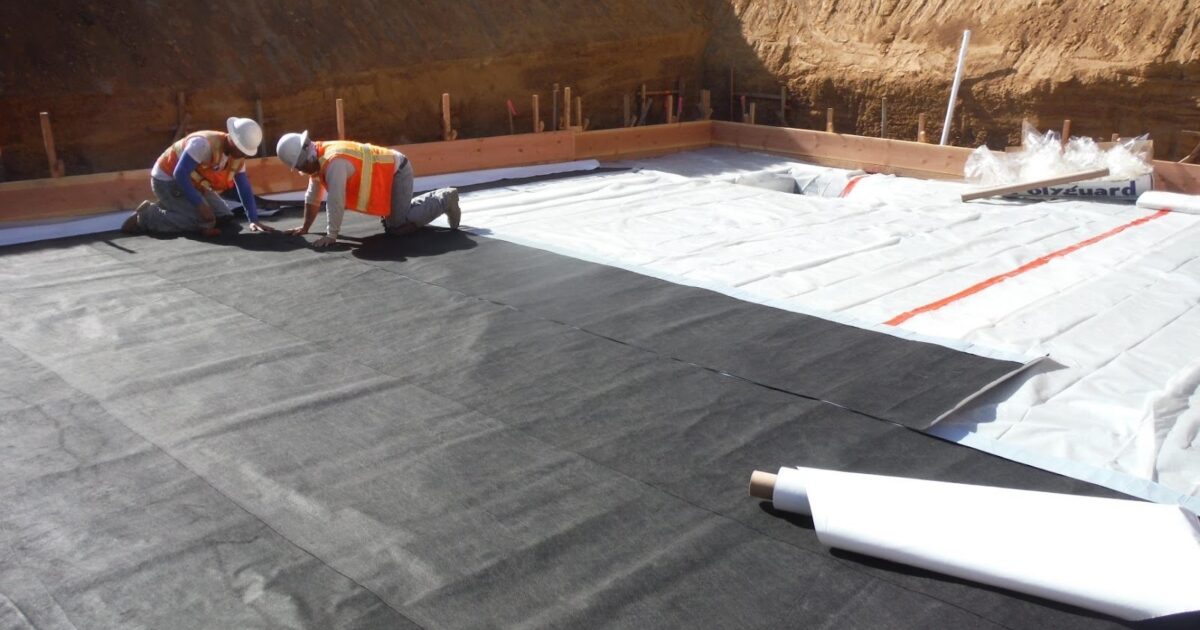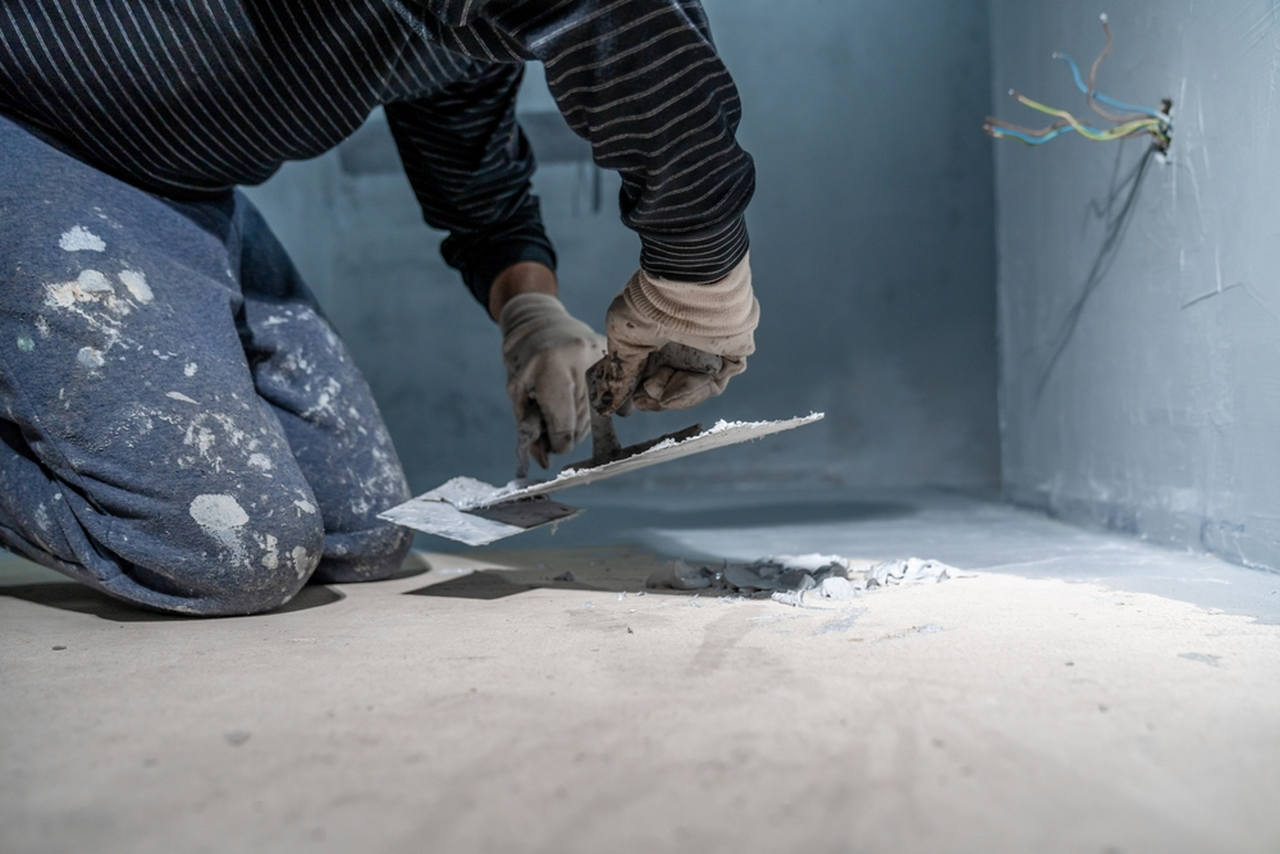Just How Waterproofing Functions: A Detailed Appearance at Techniques and Technologies
Waterproofing is important for safeguarding structures from moisture-related damage. It includes various strategies and innovations that produce obstacles versus water invasion. Typical techniques, such as compacted clay, exist side-by-side with modern innovations like liquid-applied membrane layers. Understanding the subtleties of these approaches is vital for effective application. The performance of any type of waterproofing service hinges not just on the methods utilized but likewise on ongoing upkeep and assessment. What are the essential factors that affect long-lasting performance?
Recognizing the Fundamentals of Waterproofing
Waterproofing is a crucial process that safeguards frameworks from water intrusion, which can bring about substantial damages over time. This approach entails the application of different materials and strategies designed to develop an obstacle against dampness. The main objective is to protect against water from penetrating surface areas, which can cause damage, mold development, and structural instability.Various aspects affect the choice of waterproofing technique, including the sort of framework, its place, and environmental conditions. Recognizing the physics of water activity and the properties of different materials is essential in selecting an efficient waterproofing solution.Effective waterproofing not only safeguards buildings however likewise improves their durability and stability. Usually, it is incorporated into the design phase of building to ensure detailed security. As recognition of water-related issues grows, the relevance of recognizing waterproofing fundamentals becomes increasingly clear to architects, builders, and homeowner alike.
Conventional Waterproofing Methods
Standard waterproofing methods have been used for centuries, relying upon tried and true methods and products to safeguard frameworks from water damages. Among the earliest approaches entails the usage of clay, which, when compacted, develops an all-natural obstacle versus dampness. Furthermore, asphalt, a sticky, black material acquired from petroleum, has actually been utilized for its water-resistant homes, usually used to roofs and foundations.Another technique entails the application of lime-based plasters, which offer a breathable layer that allows moisture to run away while avoiding water ingress. Thatch roofing, a traditional approach still seen in some societies, uses exceptional waterproofing because of its securely loaded straw layers.Moreover, using stone and block has been noticeable, as these products are inherently resistant to water when appropriately mounted. On the whole, conventional waterproofing techniques emphasize the significance of selecting suitable materials and building and construction practices to enhance durability against water invasion.
Modern Waterproofing Technologies
Advancements in modern waterproofing innovations have actually transformed the method frameworks are protected from water damage. Cutting-edge techniques such as liquid-applied membranes and innovative sealants have actually enhanced the performance and convenience of waterproofing options. These modern technologies allow for seamless application, decreasing the danger of leakages and ensuring comprehensive insurance coverage over complex surfaces.Moreover, the integration of wise technologies, such as wetness sensors and automated tracking systems, makes it possible for real-time evaluation of waterproofing efficiency. This aggressive method promotes timely upkeep and reduces long-lasting repair costs.Additionally, developments in spray-applied coatings use quick application and superb adhesion, adapting to various substrates while offering robust defense. Strategies like polymer-modified systems additionally enhance flexibility and durability, making them suitable for diverse atmospheres. Generally, contemporary waterproofing modern technologies not just mitigate water intrusion however also add to the longevity and sustainability of structures, marking a considerable shift in the sector.
Materials Used in Waterproofing
The effectiveness of waterproofing remedies heavily relies on the products used in their application. Various materials are employed to develop barriers against water access, each with one-of-a-kind residential properties matched for different environments. Generally used materials include membrane layers, coverings, and sealants.Liquid-applied membrane layers, usually made from polyurethane or acrylic, create a smooth barrier that adjusts to complex surface areas. Sheet membrane layers, commonly created from rubber or polycarbonate, offer resilience and are perfect for larger locations. Additionally, cementitious waterproofing products, made up of cementitious compounds, give outstanding attachment and flexibility.Sealants made from silicone or polyurethane are important for joints and seams, ensuring complete protection. Additionally, advanced materials, such as geo-composite membrane layers, integrate numerous functions, improving efficiency. In general, the option of waterproofing materials is crucial in accomplishing long-lasting and effective water resistance, customized to certain task needs and environmental conditions.
Common Applications of Waterproofing
Waterproofing plays an essential duty in various industries, ensuring the durability and integrity of structures. Usual applications consist of residential options that protect homes, commercial framework that safeguards services, and commercial settings that need robust protection versus moisture. Recognizing these applications highlights the significance read this article of waterproofing in keeping both safety and security and functionality throughout various settings.
Residential Waterproofing Solutions
Several home owners face challenges with moisture intrusion, making effective household waterproofing solutions important. Numerous approaches exist to address this problem, consisting of exterior and interior waterproofing systems. Inside services typically entail the application of sealers and finishes to basement walls, which assist protect against water seepage. Exterior techniques normally consist of the setup of drain systems and waterproof membranes that draw away water far from the foundation.Additionally, property owners may take into consideration sump pumps to eliminate water build-up and dehumidifiers to manage moisture levels. Appropriate grading and the use of rain gutters likewise play an essential duty in handling water flow around the home. By applying these methods, homeowners can greatly lower the risk of water damage and mold development, making certain a completely dry and secure living atmosphere.

Commercial Facilities Security
Reliable waterproofing solutions play an important role in the security of business framework. Water Solutions. These techniques are important for protecting buildings, car park structures, and bridges from water damage, which can compromise structural honesty and result in costly repair work. Typical applications consist of the installation of membranes, layers, and sealers that produce barriers versus wetness infiltration. Areas such as cellars, roofing systems, and exterior wall surfaces are typically focused on to guarantee longevity and resilience. In addition, waterproofing systems can enhance power effectiveness by preventing water-related problems that tufdek may bring about mold and mildew growth and damage. By executing robust waterproofing measures, residential property proprietors can shield their investments and keep operational performance, ultimately adding to the general sustainability of commercial facilities
Industrial Applications Review
While numerous sectors deal with special obstacles, the demand for reliable waterproofing services stays a consistent in commercial applications. Industries such as production, building and construction, and power often encounter atmospheres where moisture direct exposure can threaten structural honesty and operational effectiveness. In producing centers, waterproofing is critical for shielding equipment and products from water damages. In construction, it safeguards foundations and basements against groundwater seepage. The power field relies upon waterproofing for the security of devices in hydroelectric plants and offshore structures. Furthermore, food processing sectors utilize waterproofing to ensure hygiene and conformity with security standards. In general, reliable waterproofing solutions are important for enhancing durability, safety, and efficiency across various industrial setups.
Upkeep and Long Life of Waterproofing Solutions
Waterproofing options are designed to use long-term defense versus wetness intrusion, normal maintenance is crucial to assure their performance and durability. Regular examinations play a significant function in recognizing prospective problems such as fractures, peeling, or indicators of water damages. Addressing these troubles without delay can avoid further deterioration and costly repairs.Additionally, cleansing the surface of waterproofed locations assists remove dust and debris that might compromise the integrity of the waterproofing obstacle. It's additionally a good idea to reapply safety coverings or sealants as advised by manufacturers to preserve suitable performance. Ecological elements, such as UV exposure and extreme weather condition conditions, can affect the life-span of waterproofing products, making normal assessment important
Frequently Asked Inquiries
Can Waterproofing Be Applied in Winter?
The concern of applying waterproofing in winter raises concerns regarding attachment and curing. Many products might not perform at their finest in low temperature levels, demanding cautious selection and factor to consider of details guidelines for reliable application.
For How Long Does Waterproofing Typically Last?
The duration of waterproofing performance varies based upon materials and ecological elements. Typically, it can last from 5 to ten years, but normal upkeep and assessments are vital to ensure peak efficiency and long life.
Is Do It Yourself Waterproofing Effective and Safe?
The performance and safety of do it yourself waterproofing rely on various factors, including worldly top quality and application method. While some individuals accomplish sufficient outcomes, others might experience problems that jeopardize long-term protection and structural honesty.
What Are the Indications of Failing Waterproofing?
Indicators of failing waterproofing include noticeable water spots, peeling off paint, mold and mildew development, stuffy smells, and dampness in wall surfaces or ceilings - Water Solutions Omaha. These signs suggest compromised barriers, necessitating timely examination and prospective remediation to avoid Discover More Here additional damages
Exactly how Do I Pick the Right Waterproofing Specialist?
